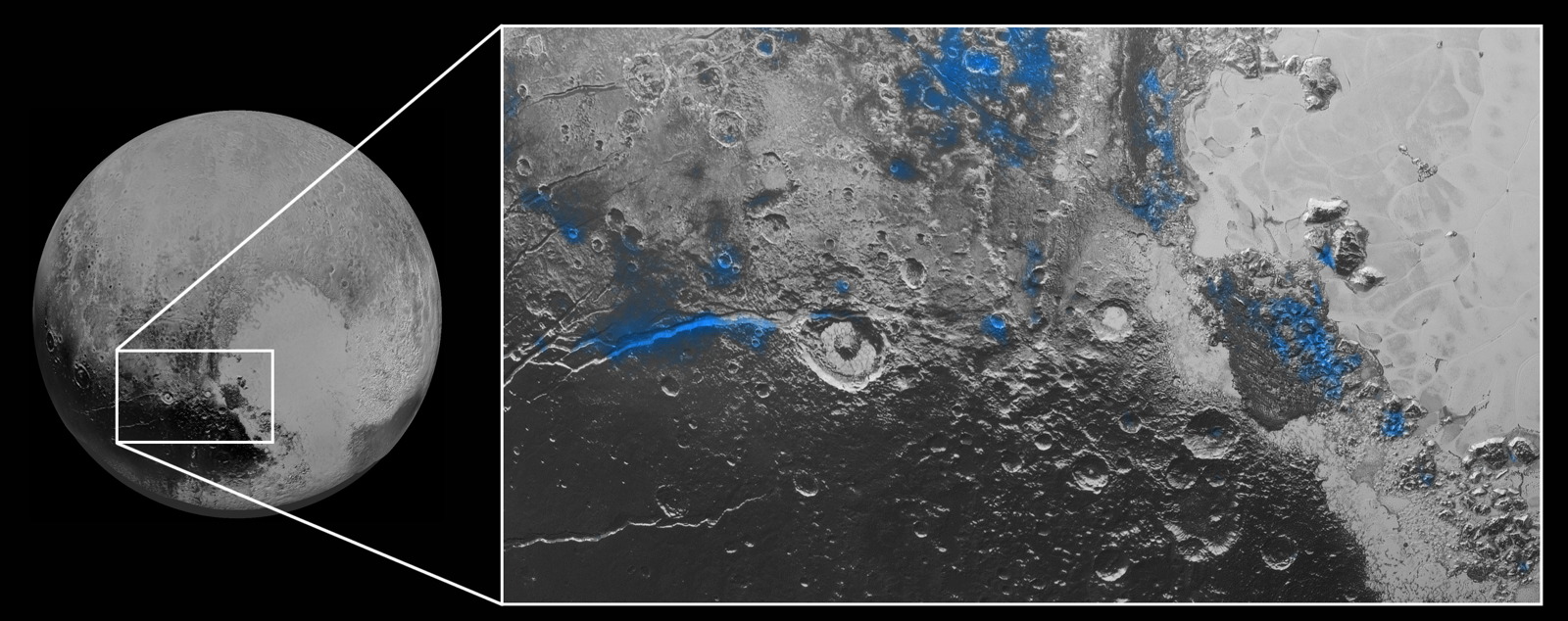How Cold is Pluto?

Lying 30 to 50 times Earth's distance from the sun, Pluto is one of the coldest large bodies in the solar system. But despite the fact that it lies so far away, its temperature can shift enough over the course of its orbit to significantly impact the planet.
Changing over time
All planets have temperature changes related to their seasons; some changes are more extreme than others. At its warmest, when it is closest to the sun, Pluto can reach temperatures of minus 369 degrees Fahrenheit (minus 223 degrees Celsius). At its coolest, temperatures can fall to minus 387 degrees F (minus 233 C).
When NASA's New Horizons mission buzzed the dwarf planet in July 2015, it revealed a thin atmosphere made up of nitrogen, methane and carbon monoxide. But the atmosphere most likely changes as Pluto orbits the sun. When the distance to Pluto from the sun is at a minimum, temperatures are warm enough for the ices to sublimate directly into gas, creating a thin atmosphere. As Pluto moves away from the sun, the gases re-freeze and the planet's atmosphere disappears from view.
The methane in Pluto's atmosphere is a greenhouse gas, which allows it to create inversions in which temperatures in the upper atmosphere are tens of degrees higher than temperatures at its surface.
Pluto is made up of a rocky core surrounded by ices. New Horizons revealed a very young surface, suggesting that the dwarf planet remained warm enough to host a liquid ocean within its interior.
Pluto lies in a region known as the Kuiper Belt, a collection of icy rocks left over from the formation of the solar system. When classified as a full-scale planet, Pluto was the coldest of the nine. But in 2006, Pluto was reclassified as a dwarf planet due to its mass and the fact that it had failed to sweep its orbit clear early in its formation. As a Kuiper Belt Object, Pluto is one among millions of rocks and ices, all bearing similar temperatures.
Despite its presence in the outskirts of the solar system, the dwarf planet may bear a strong resemblance to one of the most potentially habitable bodies orbiting the sun. Saturn's moon Titan has methane rain and lakes of methane and ammonia. According to scientists, Titan may go through a "snowball" cycle, evolving from an icy world to one filled with lakes and then back to ice again.
Breaking space news, the latest updates on rocket launches, skywatching events and more!
"Right now, if you were standing on Titan, you wouldn't be able to see the sun," graduate student Michael Wong of the California Institute of Technology told Space.com previously. You wouldn't be able to see Saturn. You'd just see haze."
"But on 'snowball' Titan — with much less methane, and thus a lot less of its photochemical products — the haze layer would not interfere with your stargazing."
Follow Nola Taylor Redd on Twitter @NolaTRedd or Google+. Follow us at @Spacedotcom, Facebook or Google+. Originally published on Space.com.

Nola Taylor Tillman is a contributing writer for Space.com. She loves all things space and astronomy-related, and always wants to learn more. She has a Bachelor's degree in English and Astrophysics from Agnes Scott College and served as an intern at Sky & Telescope magazine. She loves to speak to groups on astronomy-related subjects. She lives with her husband in Atlanta, Georgia. Follow her on Bluesky at @astrowriter.social.bluesky
